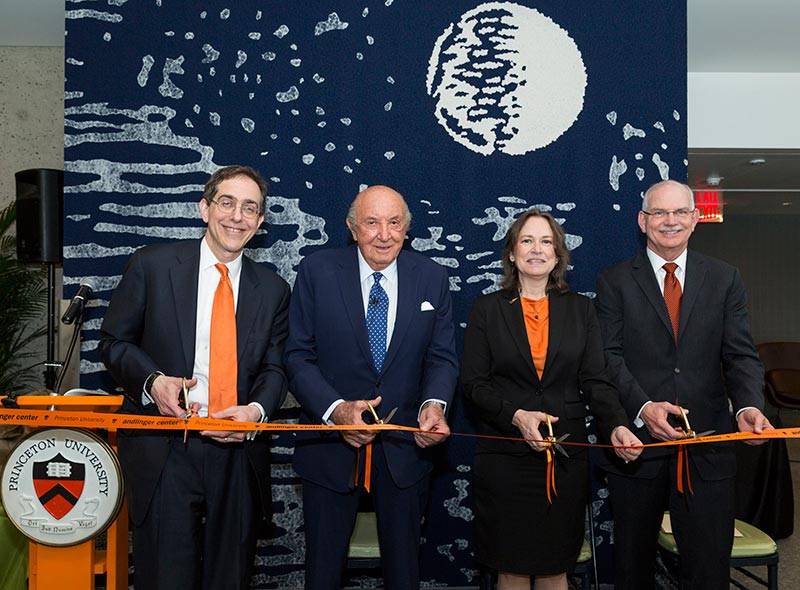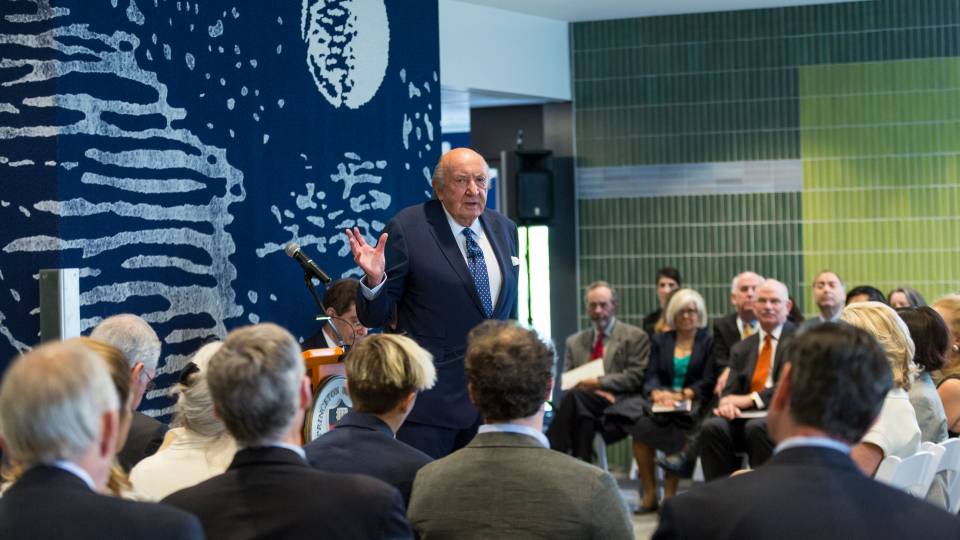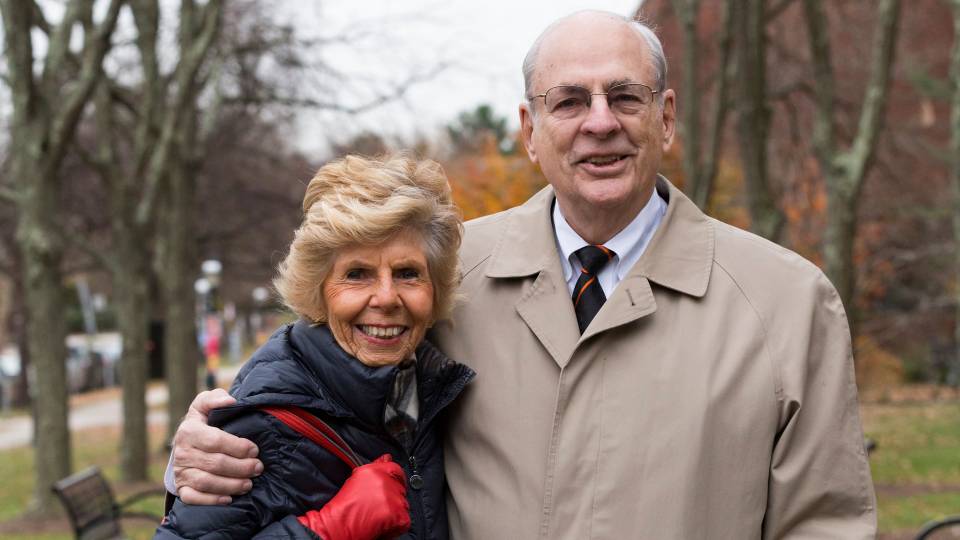
Princeton officials celebrated the new building for the Andlinger Center for Energy and the Environment on Wednesday, May 18. From left, Princeton President Christopher L. Eisgruber, alumnus Gerhard Andlinger, founding director of the center Emily Carter, and Dean of the School of Engineering and Applied Science Vincent Poor cut the ribbon for the building. (Photo: © Steven Freeman 2016 for the Office of Development)
Eight years after its founding, the Andlinger Center for Energy and the Environment celebrated its new home with a ribbon-cutting Wednesday, May 18, and kicked off a three-day symposium with leading experts from science, technology, industry and government.
Princeton University created the center in 2008 following a $100 million gift from international business leader Gerhard Andlinger, a member of the Princeton Class of 1952. The center's mission is to preserve the planet through education and research on energy-related environmental issues and sustainable energy technologies such as batteries, building design, solar cells and biofuels. The building, which has many sustainable features, was completed in the fall. "Protecting our environment and developing sources of clean energy are among the world's most urgent needs — and the search for sustainable solutions is as complex as it is critical," said Princeton President Christopher L. Eisgruber. "The work conducted within the Andlinger Center for Energy and the Environment brings together engineers, scholars, scientists and policy experts from throughout our campus, and around the world. Their diverse perspectives and experiences spark the synergies essential to developing sources of renewable and affordable energy. And in addition to their work in labs, in nature, and in the halls of government, they are teaching the next generation of leaders how to be stewards of the Earth." Emily Carter, founding director of the Andlinger Center and incoming dean of the School of Engineering and Applied Science beginning July 1, said she appreciated the permanance of the building, because problems related to energy and the environment will persist for generations. The building's design embodies the mission, she said, because with "almost every part of the building, you look out on gardens, you look out on nature. It reminds the occupants of the building why they are here, what they should be doing, how they should be preserving the environment and finding ways to create energy for our quality of life to be maintained." Seeing evidence of melting glaciers in New Zealand was one of the experiences that inspired Andlinger to make the gift to Princeton to combat climate change. "The lowest-hanging fruit is to reduce waste or increase the efficiency of energy, and it can be done a thousand different ways," Andlinger said. On Wednesday, University officials also dedicated the center's lecture hall, Maeder Hall, which is named in recognition of a gift from Paul Maeder, Class of 1975. Learn more about the symposium on the Andlinger Center website. Speakers include Norman Augustine, retired chairman and CEO of Lockheed Martin; Ralph Cicerone, president of the National Academy of Sciences; Richard Kauffman, chairman of energy and finance for the state of New York; Elizabeth Sherwood-Randall, deputy secretary of energy at the U.S. Department of Energy; Ellen Williams, director of the Advanced Research Projects Agency at the U.S. Department of Energy; as well as Princeton students and faculty members studying topics including batteries, architectural design, biofuels, thin-film energy devices, sustainable building materials and fusion power. Coverage of the symposium will appear on the University website next week.

